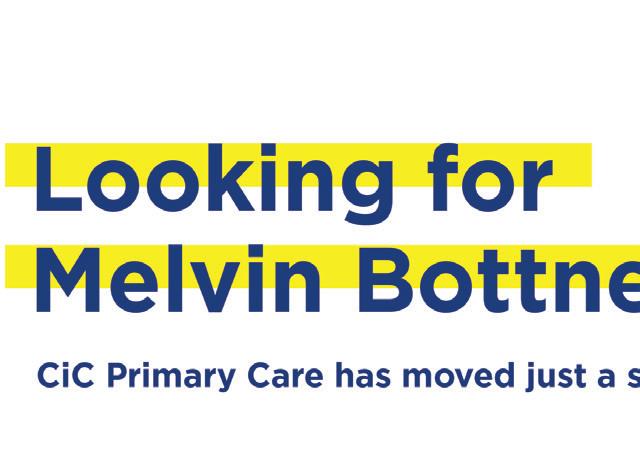
6 minute read
BUSINESS
Scottsdale.org l
@ScottsdaleProgress /ScottsdaleProgress
Virus cooling hot housing market
BY PAUL MARYNIAK Progress Executive Editor
The abrupt economic downtown created by the COVID-19 pandemic is doing something to the the Valley’s housing market that hasn’t occurred for months – driving up the inventory of homes for sale.
But with unemployment rising in the wake of the coronavirus, that likely won’t not be great news from anyone’s standpoint as sellers may not be finding as strong an appetite to buy a home as there had been only a matter of weeks ago.
Fears of close physical contact with strangers shared by sellers and buyers – combined with potential buyers’ concerns for their own financial health – are throwing water, at least for a while, on what had been one of the nation’s hottest housing markets, experts say.
The abruptness of the reversal in the market’s fortunes has been as stunning as that of the overall economic downtown, one expert noted.
“The speed of change is as high as we have ever seen,” remarked the Cromford Report, which closely studies the Valley’s housing market.
When March began, the housing market posed a steadily rosier picture for sellers and a spiraling grimmer outlook for buyers.
But now, the Cromford Report sees a different picture emerging.
The early warning signs that the COVID-19 pandemic would impact the housing market came during the first week of March, when Cromford predicted that high-dollar house sales would ebb.
It said in early March that while transactions for homes at prices of $1 million or more had increased in February by 56 percent over February 2019, the trend was likely to hit a wall. Just before the virus started cooling down the housing market, Russ Lyon Sotheby’s International Realty announced that this 6,300-square-foot mountainside home on North 98th Place in Scottsdale sold for $7.5 million. (Courtesy Russ Lyon Sotheby's International Realty)
“With the recent negative developments in the markets for stocks and commodities, we would anticipate the demand for homes over $1,000,000 to be less impressive when we look at numbers for the next few months,” it said.
Meanwhile, buyers of more modest means found greater frustration as the month began: data for February showed closings on homes up to $250,000 were down almost 19 percent from February 2019.
Sales of homes between $250,000 and $500,000 increased last month by 26.5 percent over February 2019 while closings on homes between $500,000 and $1 million were up 26.5 percent, Cromford said.
The bottom line, it added: “The supply situation is even more extreme than last month. Rapidly rising prices have done little to dampen demand.” Conversely, it said, “sellers are still gaining negotiation power in 14 out of 17 communities – including Scottsdale.
But what a difference a pandemic makes.
Cromford last week was far more pessimistic – even as it reported that the available housing stock increased Valley-wide by 27 percent in the last four weeks over what it was a year ago. The most recent estimate showed Scottsdale's inventory up by 6 percent.
“The increase in listings is heavily skewed towards the mid-price end of the market,” it said. “Between (March) 15 and (March) 22, we see an overall increase of 11 percent in active listings without a contract.”
“Of course,” it added, “we were starting from an excruciatingly low inventory of active listings between $150,000 and $300,000, so it is not hard to see a high percentage increase from such an abnormally low base.”
Zillow last week noted an abrupt increase in mortgage rates and said Bank of America’s downgrading of some major homebuilders is “suggesting the bank believes COVID-19 will harm consumer sentiment and slow home building.”
If that happens, it could put the brakes on a frenzy of home construction in the Valley, a Zillow executive said.
Moreover, some experts feared whether foreclosures would begin trending up. Zillow Economist Jeff Tucker said, “The big question at the moment is to what degree measures being taken by local, state and national legislators will help limit the number of foreclosures in the months ahead.”
Among the factors driving this inventory increase is the virtual collapse of the tourism and hospitality industry – which has pretty much wrecked, at least for now, vacation rentals, Cromford said.
Homeowners who only last month were enjoying the additional money they were making through Airbnb are quickly deciding it might be a better idea to put that same house up for sale before things get any worse, Cromford indicated.
Moreover, it noted, “A huge amount of wealth has been destroyed on the stock market in the last month…. This leaves cash in short supply and some owners may need to turn fixed assets in liquid assets at short notice.”
Social distancing also is playing a role, the report said, explaining:
“Few normal buyers are willing to make an offer without viewing a property, though some investors may be tempted. …Buying and selling, as well as construction are likely to drop sharply, especially if a close-down is ordered by govern
SCOTTSDALE PROGRESS | WWW.SCOTTSDALE.ORG | MARCH 29, 2020 ment, as it has in several states.”
Scottsdale’s increase in homes for sale was 14th among 17 Valley cities, Cromford noted.
Cromford and Zillow stressed that homeowners, for now, don’t have to worry that the rapid changes are affecting home values – which have hit almost unprecedented levels over the past year. “During the outbreak, there is little reason to suppose that house values will be significantly affected, up or down,” Cromford theorized, stressing it was hard to predict what will happen because the virus itself is unpredictable.
“We will not know where we stand until the virus is peaked and the economy is well on the road to recovery,” it said.
For now, it added, “Real estate activity will be increasingly limited, causing volumes to drop,” Cromford observed. “How far and fast they drop in Arizona will depend on decisions made at the state and county government levels.”
“It is possible that sales will cease closing if title companies and/or county recorder offices are temporarily closed,” it added, warning:
“The impact of COVID-19 on the housing market has been relatively mild so far, but it is likely to become more dramatic over the next few months.”
The virus hit just as inventory inched up after months of shrinking.
At the beginning of March, Cromford noted, “New listings are still arriving more slowly than normal and year-todate we have experienced a shortfall of 10 percent compared to 2019. Supply continues to fall quickly across most of the market.”
The report had noted prices “have not risen nearly enough to have any effect so far” on demand.
Now, it said, “the housing market has reacted to what is happening” as “a powerful upward trend transformed into a sharp downward trend.”
On Friday it observed, “For the last week, the market is cooling with supply increasing and demand in decline in most but not all areas, however, it is dropping from a very hot temperature and will take quite a while to reach normal room temperature” – where supply and demand are on a more even footing. MARKET ���� page 18
GOT SOMETHING ON YOUR MIND? Share it with The Progress readers.




Send your letters or columns to opinions@scottsdale.org









